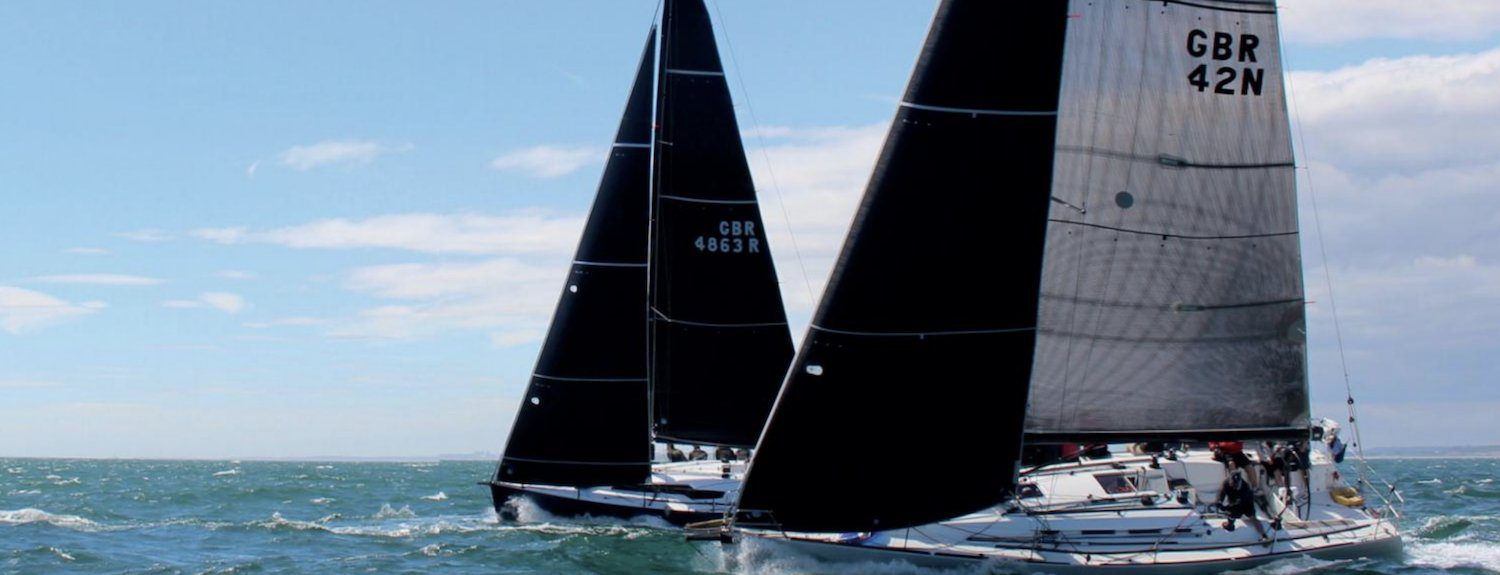Cruiser Racer Guide
How To Get Good Race Starts
Getting good race starts in a busy fleet of mixed rated IRC yachts can be tricky and requires optimum concentration, good team work and sometimes nerves of steel. But get all of the variables right and you’ll cross the line with good momentum and be in clean air up the first beat, setting yourself up for a great race.
We asked 470 Silver Olympic medallist, Luke Patience, to give us a few tips on how to make the most of the start and get ahead of the pack. Although a dinghy sailor at heart, Luke has experience calling tactics within the highly acclaimed Fast40+ fleet and won his class at the Caribbean 600 aboard a J122 – his very first offshore experience – in which the team got a fantastic start, way ahead of the fleet, putting their boat in the best position for the race.
Time Keeping is Crucial
The timing of race starts is key to getting out of the blocks in front of the rest of the fleet. Making sure you are on the line just in time - not too late and not too early - is tricky to say the least and requires lots of practice.
Before the race countdown begins, practise your approach to the line a few times so you can see how long it will take you to get across the line in the prevailing weather conditions. This will also help the trimmers to establish the best trim settings for the start and give the helm a feel for the wind angles. Nailing your timings will help you avoid falling victim to line sag too, which is a common occurrence in many large fleets.
It’s also important to give yourself plenty of time to prepare for the start. All too often you’ll see boats sailing upwind and practising manoeuvres before racing and not allowing themselves enough time to get back to the start. Although a gentle warm up can be beneficial, don’t get carried away, keep an eye on the time and listen to the radio to make sure you’re not caught out. Watching previous starts can also be helpful so make sure you’re in the starting area in good time to see how other fleets start and take note of what works and what doesn’t.
Whether you are ready or not, the start will come and it will go. Beat the clock, be over prepared, allow time to breathe and have a drink before putting the grand master plan into action.
Practice and Prepare
Having an agreed plan of action will ensure you and your crew know what the big picture looks like and be able to respond when unexpected things occur. Although race starts very rarely go exactly as planned, by having a clear strategy you can avoid confusion and potential chaos in the heat of the moment.
Try to practice your starting sequence a few times before the countdown begins to give the helm and trimmers a good idea of what to expect and to ensure all of the crew know what their role is during the start.
When I think back to bad starts, I usually wasn't completely clear in the information I had gathered before the start and what it meant, so make sure you’ve got your head around it all. It's useful to have a laminated checklist of all the bits of info you need to gather before the countdown begins and create a routine that you can follow before every single race. This might include sailing upwind to get your heading numbers, sailing on the start line to see if there is a line bias, taking a transit and, if you have the relevant regatta software onboard, pinging the ends of the line. Having a routine like this is great preparation and ensures you don’t forget anything that might throw you off course later. It can also create a feeling of calm and confidence in what can often be a stressful situation.
Work As a Team
Sailing starts are a great test of good teamwork. A well coordinated crew will work together efficiently to get the boat in the best position and off the line in clear air and at speed. Everyone aboard should have a role to play and making sure everyone understands their role will help you to coordinate a smooth starting sequence.
Starting from the front, the bowman should be confident at calling the boat into the line. Establish a set of hand signals that they and the rest of the crew, in particular the helm, understand and make sure they are clear and concise with their signals during the starting sequence. The trimmers should decide between themselves who is trimming or cutting in the tacks and understand what the best settings are for the first beat. Make sure you have one person calling out the countdown time, giving clear updates at regular intervals for everyone to hear. It’s also wise to have another person with the time as a backup in case one timer goes wrong! The tactician should look at the bigger picture and call the shots in terms of boat position and manoeuvres. The helm should be ready to listen to all of the information provided by the crew, position the boat according to the tactician’s instructions and keep the boat rolling at all times.
The boat also needs a common language. Everyone needs to know what different words and phrases mean. It sounds obvious, but when under stress and pressure, it's amazing what a half second delay can do to your start if there is confusion over what someone said. Create a language for your crew and stick to it!
And the most important thing of all - TRUST. Trust the process you have in place, commit when the correct person onboard calls for the boat to pull the trigger. Even if you are wrong, by sticking to your process, you will have the clearest and purest picture of what went wrong. Order and discipline reign supreme. Repeat over and over and tweak over and over until it works.
See our article on 'The Fundamentals of Good Crew Work' for more ideas on this topic.
Control Boat Speed
Controlling boat speed is a vital skill when starting a yacht race. Be prepared to slow down and increase boat speed constantly and within tight spaces. Practise various methods of controlling boat speed with your crew so that everyone understands how to change gears in the midst of a busy starting sequence. Trimming and easing sails is effective, as is rudder stalling and mainsail luffing, but the most effective procedure will depend on your boat and set up so try the different methods out to find the best process for you. Whatever you do, though, make sure you have enough momentum to get over the startline at full speed - see more notes on this below.
Keep It Rolling
Momentum is crucial in heavy boats. From doing previous practice runs, you’ll find your safe distances from the line and when to start sailing full speed before the gun goes. It can sometimes look odd, as boats may be ahead of you physically leading up to the start, but they have no flow and are slow, so by the time the gun goes you’ll be ahead.
As you approach the line in the last minute or so, protect the space below you so that you have the space to bare away and head up when you need to. Often, if you put yourself in the place you actually want to start early in the sequence, then more often than not you will be unchallenged as boats will rarely push to take that spot you had. It's distracting for them and just too hard to manipulate and get a perfect start themselves.
Also make sure you hit the line at near to full speed as possible to get ahead of the fleet and into clean air. This means trimming the sails correctly, making sure the helm doesn’t point too high and good distribution of crew weight to make sure the boat is up to target boat speed straight away. Pre-start preparation will help the trimmers to establish the best sail trim settings for the first beat and the helm should take note of the true wind angles to ensure they sail in the groove and hold a lane from the start.
Overall, getting good race starts comes with good preparation, practise and lots of teamwork. There are so many things to think about when starting, but if you can bring them all together on the day, you’ll give yourself the best possible chance of a good race. You’ll need to be adaptive, flexible and ready to react to unexpected manoeuvres from other boats, but embrace the nerves and excitement and use the adrenalin rush to drive you forward and gain that competitive advantage. The buzz you’ll get from being first across the line will naturally lift the spirits of the crew for the first beat and help propel you forward, so put the effort in, become an expert starter and you’ll certainly reap the rewards. The race might be yours to lose from that point on, but still, for a positive mindset, I would rather be winning and defending from the front than be at the back of the fleet desperately trying to get to the windward mark in a good position.
Luke is sponsored by Bolle and Team Volvo and supported by Red Sky Management. You can follow Luke via Twitter @patience_luke and Instagram @lukepatience








